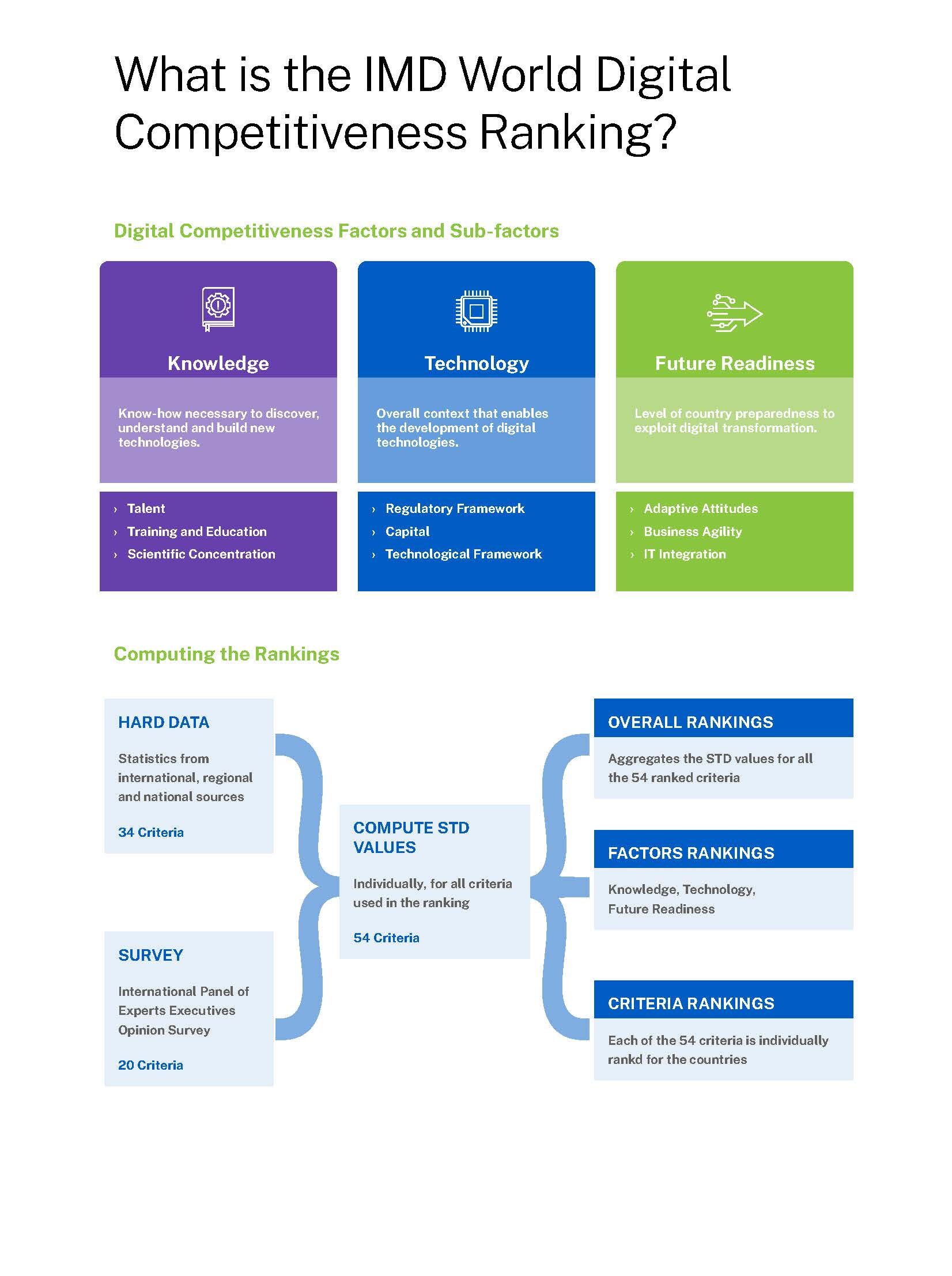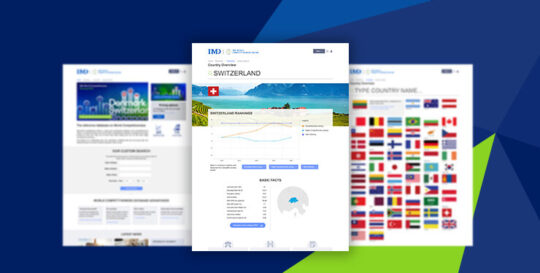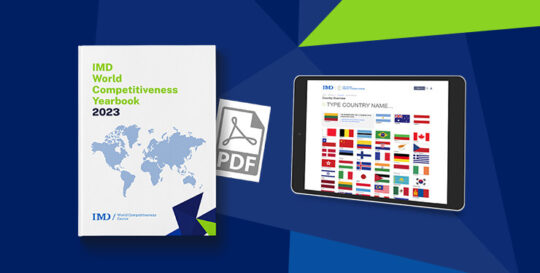


World Digital Competitiveness Ranking
World Digital Competitiveness Ranking 2023
Now in its seventh year, the IMD World Digital Competitiveness Ranking, produced by the IMD World Competitiveness Center, measures the capacity and readiness of 64 economies to adopt and explore digital technologies as a key driver for economic transformation in business, government and wider society.
Based on a mixture of hard data and survey replies from business and government executives, the digital rankings help governments and companies to understand where to focus their resources and what might be best practices when embarking on digital transformation.
2023 results
Incorporating AI technology from the top down will build digital nationhood in 2024, says new IMD report
The United States has staved off competition from its European and Asian chasers to triumph in the 2023 edition of the IMD World Digital Competitiveness Ranking, which hammered home the need to see beyond the hype when it comes to AI.
The US last year fell to second place for the first time since the 2017 launch of the annual ranking produced by the IMD World Competitiveness Center (WCC), but this year achieved robust results across all three of the broad categories (“factors”) measured by the economists: knowledge, technology, and future readiness.
“We hope this year’s ranking sheds light on the key factors that can help countries combine prosperity and economic development with digital transformation and the development of AI solutions, in order to create the digital nations of 2024 and beyond,” said Professor Arturo Bris, Director of the WCC.
“There is ample evidence across our rankings that national competitiveness results from investment in education and the provision of those skills required by the labor market. When it comes to technology and AI, the need is even greater,” he added.
The Netherlands climbed four positions to rank second in the ranking. It was given a leg up by improvements in data measured such as the adequacy of the private sector’s cybersecurity, total public expenditure on education, and higher education achievement.
2023 Report
Methodology in a nutshell
The IMD World Digital Competitiveness (WDC) ranking analyzes and ranks the extent to which countries adopt and explore digital technologies leading to transformation in government practices, business models and society in general.
As in the case of the IMD World Competitiveness ranking, we assume that digital transformation takes place primarily at enterprise level (whether private or state-owned) but it also occurs at the government and society levels.
Based on our research, the methodology of the WDC ranking defi nes digital competitiveness into three main factors:
- Knowledge
- Technology
- Future readiness
In turn, each of these factors is divided into 3 sub-factors which highlight every facet of the areas analyzed. Altogether, the WDC features nine such sub-factors.
These nine sub-factors comprise 54 criteria, although each sub-factor does not necessarily have the same number of criteria (for example, it takes more criteria to assess Training and Education than to evaluate IT integration).
Each sub-factor, independently of the number of criteria it contains, has the same weight in the overall consolidation of results, that is approximately 11.1% (100 ÷ 9 ~ 11.1).
Criteria can be hard data, which analyze digital competitiveness as it can be measured (e.g. Internet bandwidth speed) or soft data, which analyze competitiveness as it can be perceived (e.g. Agility of companies). Hard criteria represent a weight of 2/3 in the overall ranking whereas the survey data represent a weight of 1/3.
The 54 criteria include 19 new indicators which are only used in the assessment of the WDC ranking. The rest of the indicators are shared with the IMD World Competitiveness Ranking.
In addition, two criteria are for background information only, which means that they are not used in calculating the overall competitiveness ranking (i.e., Population and GDP).
Finally, aggregating the results of the nine sub-factors makes the total consolidation, which leads to the overall ranking of the WDC.
Digital Competitiveness factors and sub-factors
Computing the Rankings

Register to receive the latest news and events from IMD’s World Competitiveness Center


